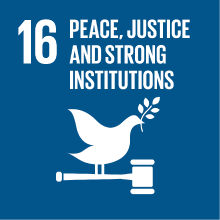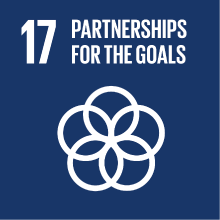HISTORY OF RUSSIAN ART
- Academic year
- 2024/2025 Syllabus of previous years
- Official course title
- STORIA DELL'ARTE RUSSA
- Course code
- FT0454 (AF:376851 AR:289726)
- Teaching language
- Italian
- Modality
- On campus classes
- ECTS credits
- 6
- Degree level
- Bachelor's Degree Programme
- Academic Discipline
- L-ART/03
- Period
- 3rd Term
- Course year
- 3
- Moodle
- Go to Moodle page
Contribution of the course to the overall degree programme goals
Those objectives will provide students with basic knowledge in view of further specializations in the field of Russian art history.
Expected learning outcomes
1.Knowledge
The main stages of the history of Russian painting will be addressed in chronological order, from the icons to 18th-, 19th- and 20th-century art, up to the avant-garde movements. The final part of the course will focus on the work of V. Kandinsky, M. Chagall, and K. Malevich.
2.Communicative skills
Each student will be able to clearly communicate and substantiate the contents of the course.
3.Critical skills
Each student will be able to critically evaluate the historical evolution of Russian painting through the centuries and the artistic movements under study and to identify the work of artists from different centuries not only in terms of the historical period but also of characteristic features.
Pre-requirements
Contents
The module will chronologically debate about the history of Russian painting, from its origins to the Avant-Garde and to the October Revolution, focusing on artistic trends and their major representatives, as well as on the most significant paintings. The course will also highlight the works of three fundamental figures of modern Russian painting: V. Kandinsky, M. Chagall, and K. Malevich.
1. Origins and characteristics of the Russian Icon.
2. The painting in the Petrine era.
3. Russian painting of the 18th century. Figures and movements.
4. Russian painting of the 19th century. Figures and movements.
5. Artistic Avant-garde in Russia.
6. V. Kandinsky, M. Chagall, and K. Malevich.
Referral texts
Lecture notes
Powerpoint with notes projected during the lessons will be available on the e-learning Moodle platform
PDF essays available on the e-learning Moodle platform:
S. Burini, La verità della bellezza: il sacro e l'arte russa , Kandinskij, Gončarova, Chagall. Sacro e bellezza nell'arte russa, Milano, Skira, pp. 25-41.
S. Burini, Marc Chagall:"il paradigma della provincia in pittura", in Contaminazioni e spigolature turcologiche, Vicenza, Terra Ferma, 2010, pp. 95-114.
S. Burini, "Quadri da un'esposizione": il percorso della mostra, in Avanguardia Russa. Esperienze di un mondo nuovo, a cura di G. Barbieri e S. Burini, Milano, Silvana Editoriale, 2011, pp. 43-57.
S. Burini, In viaggio con Kandinskij , in Kandinskij. Il cavaliere errante in viaggio verso l'astrazione, Milano, 24 ORE cultura, 2017, pp. 17-37.
S. Burini, Esplosioni e cesure: le Rivoluzioni Russe da Djagilev all'URSS , in La Rivoluzione Russa. L'arte da Djagilev all'Astrattismo 1898-1922, Crocetta del Montello, Terra Ferma, 2017, pp. 15-44.
Recommended reference text available in the library:
D. Sarab'janov, Arte Russa, Milano, Rizzoli, 1990.
Quotes from
W. Kandinsky, Lo spirituale nell'arte, Milano, SE, 1989.
M. Chagall, La mia vita, Milano, SE, 1998.
Assessment methods
The exam consists of four open questions. One incomplete answer will result in a fail grade.
The use of books, notes, and electronic media is not allowed during the test.
Regarding the grading scale for the written exam (method by which grades will be assigned), regardless of whether the student is attending or non-attending:
A. Scores in the range of 18-22 will be assigned in the presence of:
- sufficient knowledge and applied comprehension with reference to the program;
- limited ability to gather and/or interpret data, forming independent judgments;
- sufficient communication skills, especially in relation to the use of specific historical-artistic language.
B. Scores in the range of 23-26 will be assigned in the presence of:
- fair knowledge and applied comprehension with reference to the program;
- fair ability to gather and/or interpret data, forming independent judgments;
- fair communication skills, especially in relation to the use of specific historical-artistic language.
C. Scores in the range of 27-30 will be assigned in the presence of:
- good or excellent knowledge and applied comprehension with reference to the program;
- good or excellent ability to gather and/or interpret data, forming independent judgments;
- fully appropriate communication skills, especially in relation to the use of specific historical-artistic language.
D. Honors will be awarded in the presence of excellent knowledge and applied comprehension with reference to the program, judgment skills, and communication abilities.
Type of exam
Teaching methods
It is possible that the lectures will be integrated with visits to exhibitions. A guided tour of the icon collection at Palazzo Leoni Montanari (Gallerie d'Italia - Vicenza) will be proposed.
The material shown during the lessons will be available on the University's Moodle e-learning platform.
Further information
2030 Agenda for Sustainable Development Goals
This subject deals with topics related to the macro-area "International cooperation" and contributes to the achievement of one or more goals of U. N. Agenda for Sustainable Development


